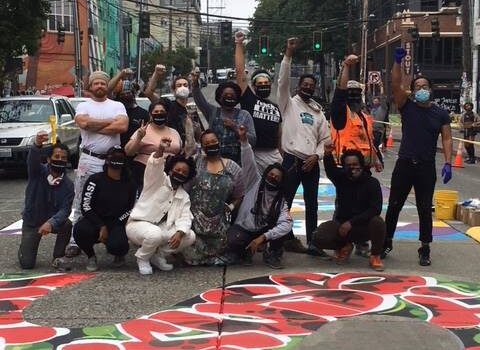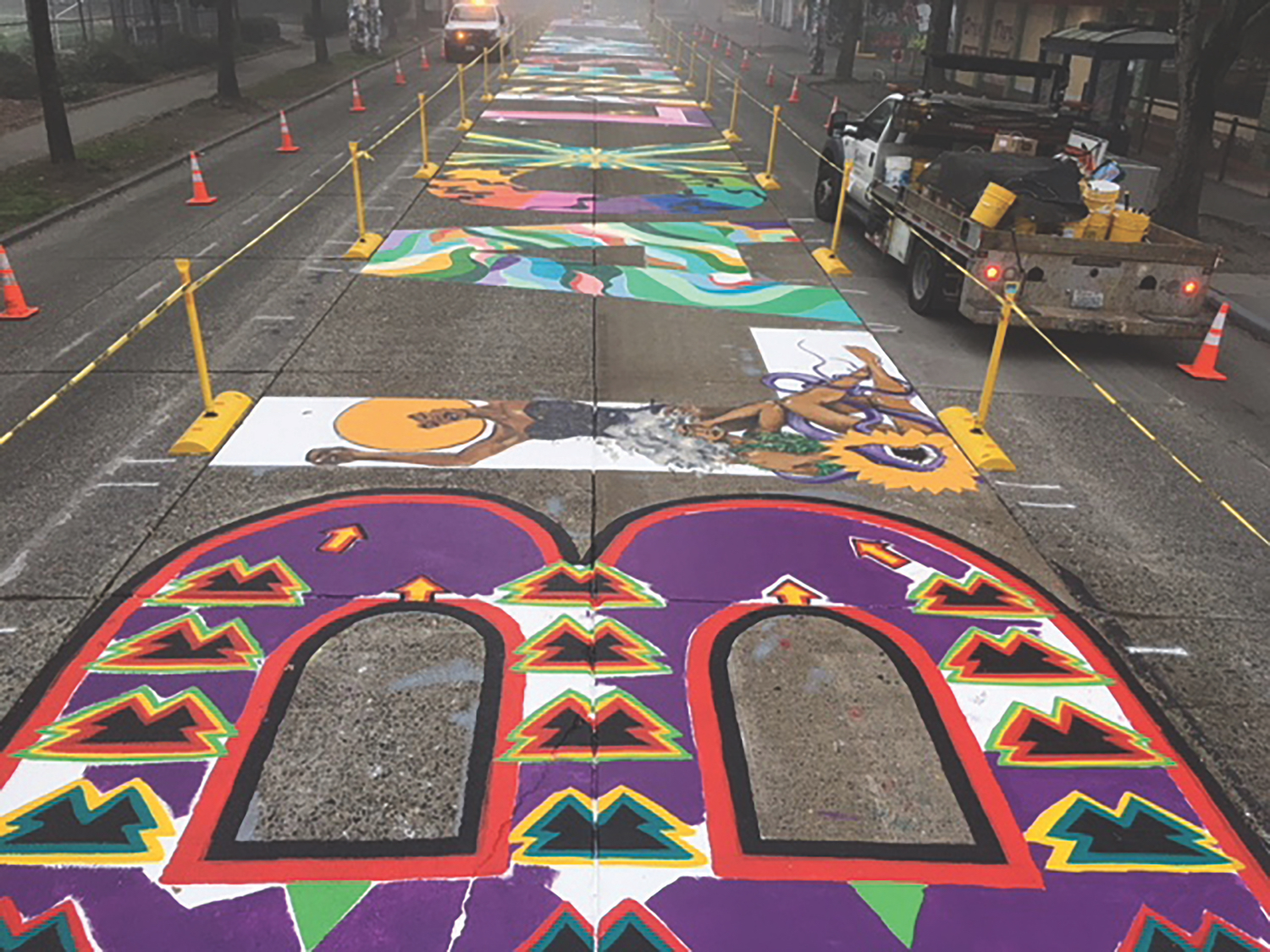For PROTEC17 member Dahvee Enciso, helping make the Black Lives Matter (BLM) street mural a permanent fixture at 10th Avenue and East Pine Street in Seattle was one of the most important projects of his career.
As a Senior Civil Engineer Specialist at the Seattle Department of Transportation (SDOT) for the last 14 years, Enciso feels privileged to have been able to work on a lot of unique projects. His primary job is to review plans and oversee the installation of decorative markings throughout the city, currently which number more than 50. He also reviews plans for other signage and markings and helps with sealing and maintenance programs.
Over the summer, when activists for racial justice assembled in the Capitol Hill neighborhood and created a powerful mural, spanning a whole city block, in honor of the Black Lives Matter movement, SDOT thought it was important to preserve the art and the moment in history. But while SDOT had good intentions, Enciso first had to convince the artists in the VividMatterCollective – whose work was directly protesting the municipal institution and system that he works for – that the City of Seattle did not want to commercialize their art or dilute their strong message.
“After hearing the concerns of the Collective, I was able to share with them in a more personal way what the mural meant to me,” said Enciso.
“I told them that I felt this piece is bigger than all of us and it would be a shame to see it crumble and wash down the street, erasing the moment that marked the movement.”
After considering Enciso’s comments, the Collective agreed to partner with SDOT and the Office of Arts and Culture, and together, they came up with a plan to remove the mural that had been damaged with sealant, commission 15 artists to repaint the mural, and use the best preservation techniques so that it could become a permanent landmark in Seattle.
Enciso was onsite from the beginning to the end of the project. He used his knowledge of street mural techniques – like hydroblasting and using traffic solvent that is engineered to bond to road surfaces – to help provide an optimal canvas for the artists to paint on. He also met with artists at the paint store to acquire all of the needed materials. In all, the artists used three coats of vibrant paint on top of the solvent.
Helping with this project was incredibly important to Enciso, who tries to live by the motto: When it’s all said and done, will I have done more than I’ve said, or said more than I’ve done? He is proud to have participated in this project in order to help give voice to all of those who have been disregarded, hurt, or killed because of the color or their skin.
“This piece symbolizes the passing of the torch from the old generation to the new generation who are shouting ‘enough is enough’ and demanding change. I want to be able to bring my grandkids here to visit the site where the movement changed the world.”
Enciso’s family, including his wife, stepmother, and children, were onsite for the project, too.






